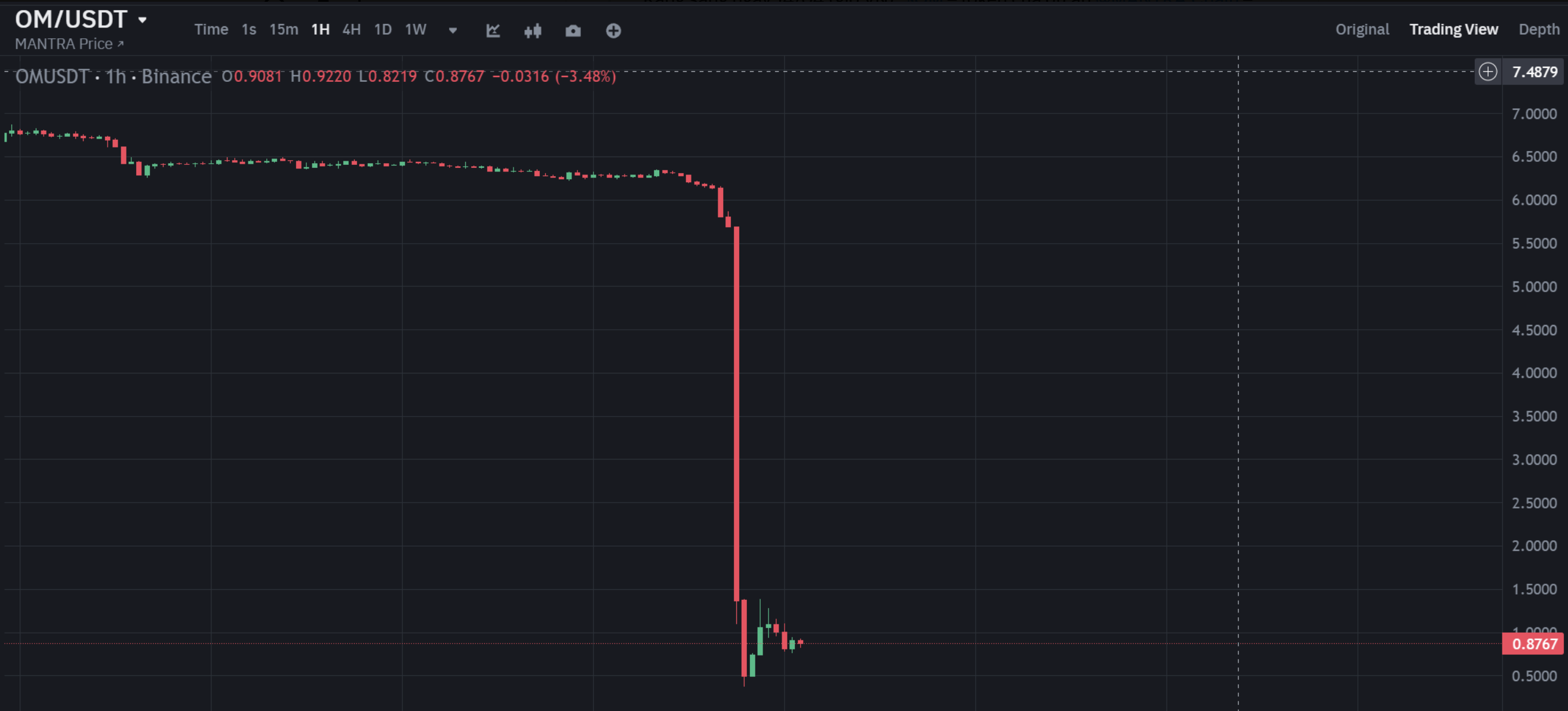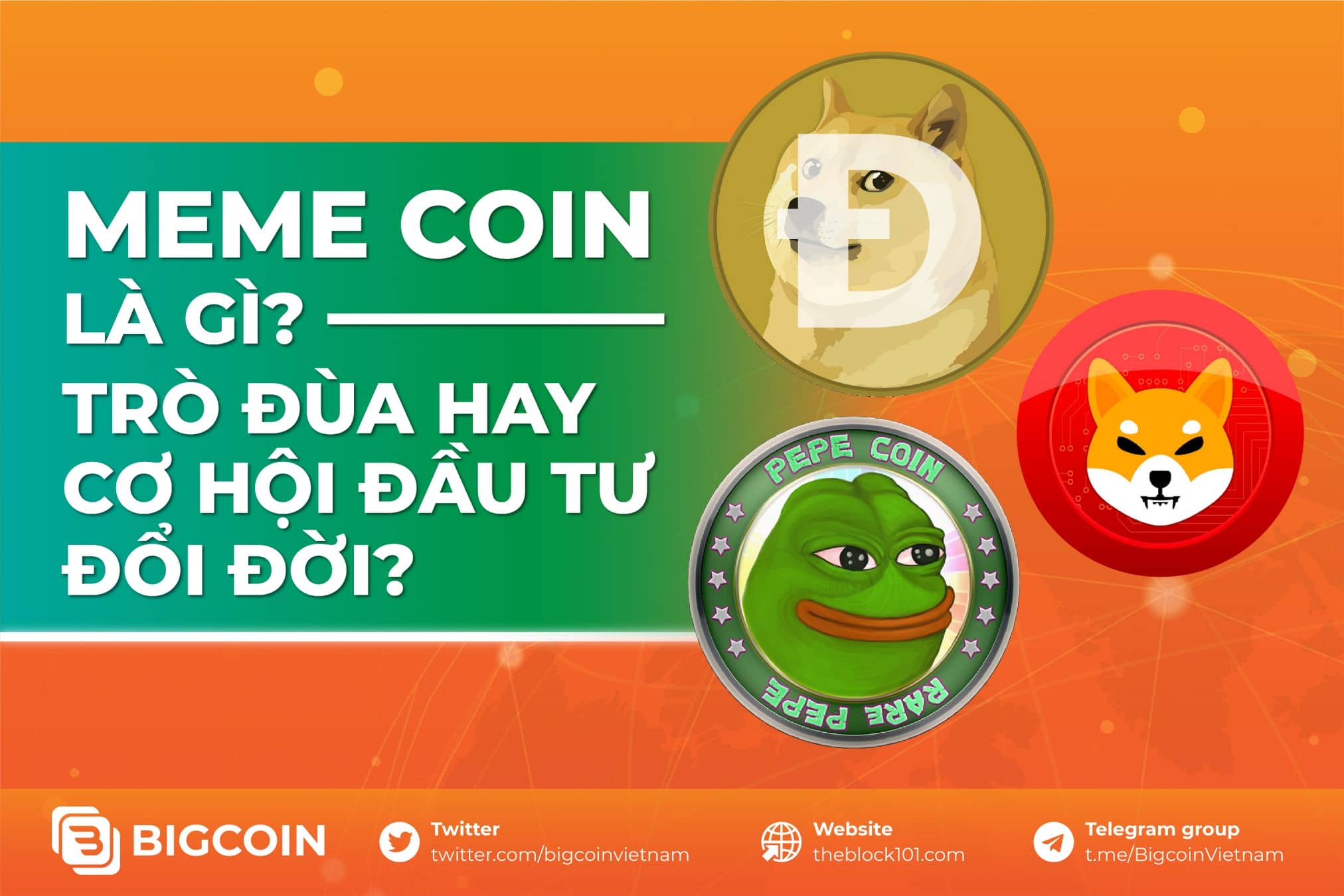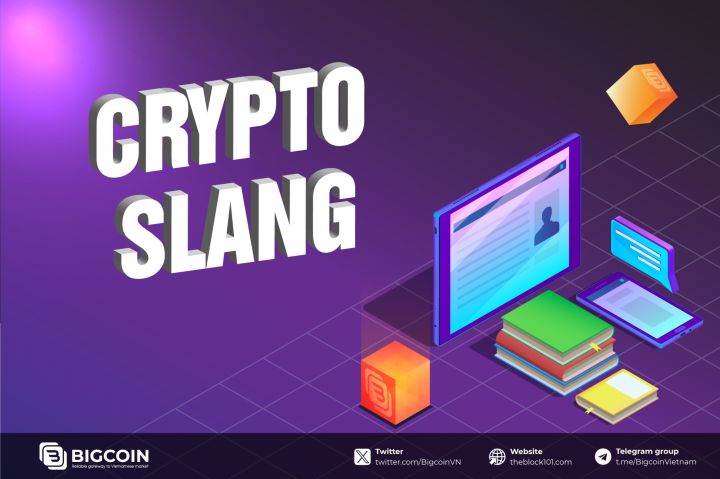
1. A Stunning Crash: $OM Token Plummets, Over $5.5 Billion Wiped from Market Cap
On April 13, 2025, the cryptocurrency market witnessed a dramatic and unexpected collapse of OM — the native token of MANTRA, a project previously regarded as a leader in the tokenization of real-world assets (RWA). Within just a few hours, OM’s price plummeted from around $6.30 to below $0.50, marking a decline of nearly 90%.

This sharp drop caused OM’s market capitalization to fall from nearly $6 billion to $500 million, wiping out more than $5.5 billion in value. Investors across the globe expressed shock and outrage, and social media platforms were flooded with accusations of fraud, insider manipulation, and mismanagement. Some referred to the incident as “LUNA 2.0” — drawing comparisons to one of the most infamous collapses in crypto history.
2. Investigating the Causes Behind OM’s Collapse
2.1. Suspicious On-Chain Activity
On-chain data revealed large-scale token movements just before the crash. Approximately $76 million worth of OM was transferred to Binance shortly before the price started collapsing. Additionally, a $20 million transfer was made to OKX on April 13 — only a day before the event.
A wallet suspected to be associated with a Chinese entity also moved around $15 million, likely via OTC deals. Another $2 million originated from a wallet allegedly linked to Shane Shin, a former collaborator of MANTRA.
In total, over $113 million worth of OM tokens were moved, primarily to exchanges, within 24 hours. Such movements are difficult to dismiss as mere coincidence.
2.2. Questionable Actions by the MANTRA Team
Concerns began to grow that the team behind OM may have orchestrated the crash. There are reports suggesting that MANTRA controls up to 90% of the token supply. Some users alleged that the team conducted OTC sales to outside investors at discounts of up to 50% compared to the market price. When the price began to fall, these investors panicked and sold off, triggering a domino effect.
To make matters worse, the official Telegram channel was locked for comments immediately following the crash, frustrating the community further due to the lack of communication.
Adding fuel to the fire, just days before the crash, MANTRA DAO reportedly burned over 84 million OM tokens — worth around $524 million. While token burns are usually considered bullish signals, in this context, the burn was viewed with skepticism. Some speculated it was a tactic to mask large token transfers to "fake" burn addresses, which could later be slowly liquidated.
2.3. Strategic Timing of the Sell-Off
The crash occurred between 1:30–2:00 AM Vietnam time — a period when market liquidity is typically at its lowest. Offloading a large volume of tokens during this thinly traded window made it easier to push prices down with minimal resistance from buy orders.
Furthermore, there were significant discrepancies in OM's pricing between DEXs and CEXs at the time, suggesting potential liquidity manipulation or deliberate price suppression.
2.4. Team’s Response Falls Short
Guys let's get a couple things straight:
— JP Mullin (🕉, 🏘️) (@jp_mullin888) April 13, 2025
- The TG was not deleted.
- The Team tokens all remain in custody, verifiable at this address - mantra1yejpacug78zuqkzwwuc94c0a2al4mz4yfqquam
- We are actively figuring out why these massive forced liquidations occurred and will provide…
The MANTRA Foundation attributed the crash to “market forces and external factors.” However, this explanation was widely criticized for being vague and evasive. On-chain investigator ZachXBT bluntly stated that a 90% drop in a single candlestick cannot be dismissed as a natural market event.
The decision to cut off community channels immediately after the incident further eroded trust, with many interpreting it as an attempt to dodge accountability.
3. Conclusion
The collapse of OM highlights the persistent vulnerabilities in the crypto ecosystem — even for projects with significant backing and ambitious visions. While MANTRA positioned itself as a serious player in the growing RWA sector, the events of April 13 suggest a breakdown of trust, transparency, and responsible governance.
Whether this was a result of poor risk management or an orchestrated sell-off remains a subject of ongoing investigation. However, the data points — including suspicious token movements, centralized control, and opaque token sales — paint a troubling picture. For many, the OM crash stands as a stark reminder that even the most promising crypto projects are not immune to failure, and due diligence remains more critical than ever.
Read more:

 English
English Tiếng Việt
Tiếng Việt

















